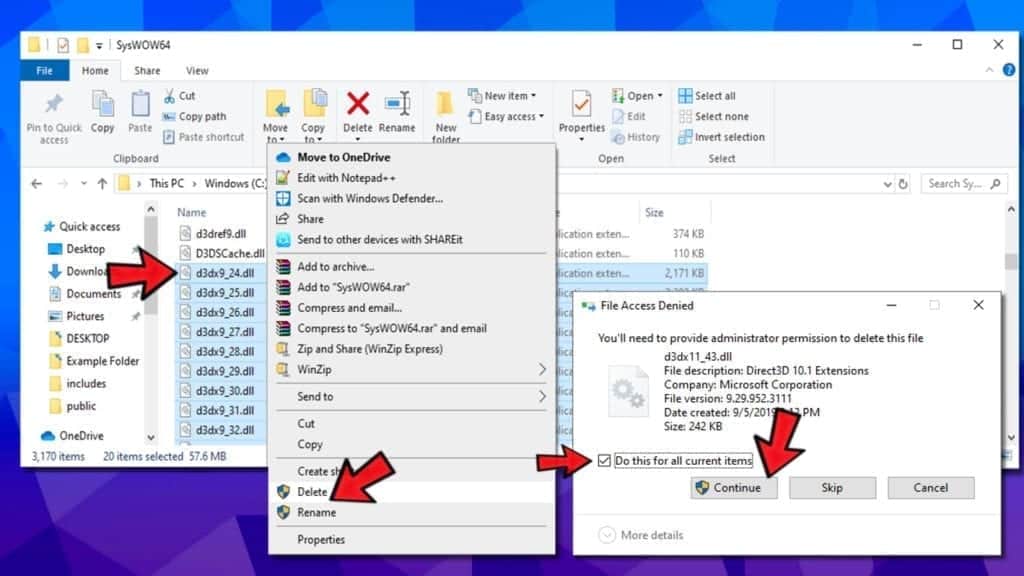Manual removal of an unwanted DLL file can be performed if the DLL file is unregistered first. Unregister and Remove Unwanted DLL files manually. Locate the unwanted DLL file by opening the command prompt window. Click 'Start' menu select 'Run' type in 'cmd' click 'OK'. Use Safe Mode to Unlock and Delete Files. To delete a file that won’t be deleted, you can also try to start Windows 10 in safe mode to unlock and delete the file. Click Start - Settings - Update & Security - Recovery - Restart now (under Advanced Startup), to enter into Windows recovery environment. How to Delete a Dll File. Click the 'Start' button in Window,s and select 'Search' from the Start Menu. Video of the Day.
If Windows is blocking you from deleting a file, you can use a single command to force delete the file from the command line. You can generally delete almost any file or folder by simply pressing the Delete button on the keyboard. When deleted, the file is moved to the Recycle Bin so that you can recover the deleted data when needed. Save the file, locate the file, and double-click the batch file to delete the System32 files. Acquire Ownership & Delete. You need to have administrative permissions. Click Start, search cmd, and open Command Prompt.
This post explains how to delete files using Powershell command ‘Remove-Item’.
Delete file from PowerShell
We can delete a file using remove-item command as below. Open powershell prompt and execute the command.
Example:
Delete multiple files
We can delete as many files as we want with single remove-item command. We just need to add the file names separated by comma. See example below.
Remove files with wild characters
Remove-item command accepts wildcards too, using which we can delete files in bulk.
The above command deletes all files with csv extension.
If the file does not exist, the command throws error as shown below.
Delete directory
Delete Dll Files Windows 10
Remove-Item command works for deleting directories as well. Below is an example command for the same.
If the directory has files, the basic command asks for confirmation, you would need press ‘Y’ to proceed with deletion, ‘N’ for aborting it.
To avoid confirmation, you can use ‘-recurse’ argument along with ‘Remove-Item’ cmdlet. Example below.
Full path on a computer: %SYSTEMDRIVE%PROGRA~1COMMON~1SYSTEMSYMSRV.DLL
 The file SYMSRV.DLL
The file SYMSRV.DLLYou must delete the file
How To Delete Dll Files From Windows
SYMSRV.DLL immediately!- Uninstall SYMSRV.DLL using Windows uninstallation applet (use Add/Remove Programs or Uninstall Program or Apps & features).
- Open Task Manager and terminate 'SYMSRV.DLL' processes.
- Use Windows search to find and remove 'SYMSRV.DLL' files and folders.
- Run services.msc and disable a 'SYMSRV.DLL' Windows service.
- Execute taskschd.msc to get rid of 'SYMSRV.DLL' scheduled tasks.
- Open regedit.exe and delete SYMSRV.DLL registry keys and values.
- Inspect the properties of your desktop and Start menu shortcuts for SYMSRV.DLL presence and 'http://' links.
- Open your browser and disable SYMSRV.DLL plugins. Disable all unknown plugins. Reset the browser settings.
- Clean your Recycle bin and temporary files.
- Restart your computer and check results.

SYMSRV.DLL is related to: SYMSRV.DLL.